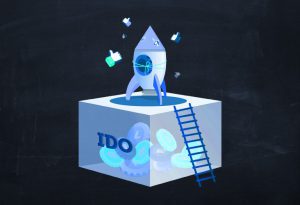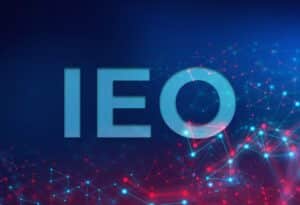
Table of Contents
ToggleIn the world of cryptocurrencies, every day we see important concepts that we must know in order to better understand how many projects work. One of these important concepts is IGO. IGO is the abbreviation for Initial Gaming Offer. IGOs are often used in gaming projects with the aim of raising funds in the crypto world.
LIGOs are NFT collectibles from top-tier game projects. These collections can be launched through auctions, fixed price and even mystery boxes. This concept has some things in common with others like ICO (Initial Cryptocurrency Offering), IDO (Initial DEX Offering) and even IEO (Initial Exchange Offering). All of these concepts are used to raise funds for a project, the difference is in the reason why the funds are raised.
How does an IGO work?
Platforms that launch IGOs usually host NFT or tokens as in-game currencies and rewards. These IGOs face some structural problems, such as the lack of an exchange point which leads to a lack of liquidity and exchange of in-game items. Another problem with these events is that they do not have insurance coverage for the player’s in-game valuables. In addition, on most platforms belonging to the conventional model, players and developers encounter an opposite connection. On the one hand, they are constantly trying to make improvements to the game in order to offer superior usability to users, and on the other hand, they constantly want to explore diversity in order to maximize the enjoyment of the game’s features.
With the emergence of games like Axie Infinity or Cryptokitties, a boom was generated in the gaming market. From that moment on, the advantages and functions that blockchain technology brings to the gaming industry began to stand out. Among these advantages is a greater scalability that helps to settle a large number of transactions from the same platform, all in a public and transparent way. Even, there came the functionality of making in-game items priced, creating an atmosphere of item exchange. In addition, it was possible to implement the use of game tokens that are listed in the main exchanges, increasing the platform’s liquidity.
Players now have the ability to easily purchase and promote gaming products. Another of the gaming industry’s achievements in implementing blockchain technology is the ability to provide governance to the local community so players have a more genuine sense of ownership.

What are IGO platforms?
As blockchain games become more popular, the number of projects implementing this system increases, and as expected, the demand for funds increases. As a result of this chain, comes this new method of fundraising that emerged in 2021.
Nowadays it is not common to see a gaming project being published on decentralized exchanges, since these are new and developing projects, they usually go to IGO platforms, which are known for meeting the demand for investment capital.
These platforms are home to hundreds of gamers investors who prefer to opt for investment in DeFi games based on blockchain technology, as while playing they can explore and experiment with the investment arena. Having seen all the above data, we can conclude that IGO platforms aim to form a suitable system for gamers looking to generate profits through IGO participation in gamification projects.

Difference between ICO, IEO, IDO and IGO
Although we often see these concepts in investment, fundraising, early stage projects, etc., it does not mean that we can classify them in the same category. It should be noted that these are not the only fundraising methods, however, they are the most popular. Below we will see how they differ.
- ICO (Initial Coin Offering): This was the first fundraising method used in the cryptocurrency world. It does not require any intermediary or third party.
- IEO (Initial Exchange Offering): After the use of ICOs in the initial stages, many projects started using IEO with the goal of raising funds through intermediaries and other third party organizations.
- IDO (Initial DEX offering): The IDO concept was launched in 2021 and has been used in numerous projects since then. Many projects employ IDOs to raise funds on decentralized platforms such as UniSwap, PancakeSwap, Poocoin, and so on.
- IGO (Initial Game Offering): With this concept, projects can raise funds through the sale of tokens in wallets, it is quite similar to IDOs, but applied to the gaming industry.
Most important IGO platforms
Currently, there are numerous IGO platforms, but not all of them have managed to position themselves among the most prominent. For this reason, here is a top list of the most notable IGO platforms in this sector.
- Gamestarter: This platform allows gaming projects to make sales of NFT or tokens for fundraising. This platform launched two well-known gaming projects. These are Demole and Dark Frontiers. They were launched with the aim of achieving fundraising with a high return on investment.
- Seedify: This IGO platform differs from the rest in that it has a large number of game projects registered for IGOs on the platform. In addition, the said platform has a 9-tier rating from which investors can select projects to invest in. In October 2021 Seedify launched a new plan to upgrade the platform to V2 bringing numerous extensions that diversify the platform.
- Enjinstarter:This is another prominent IGO platform centered within the Enjin ecosystem. Like the other platforms, it focuses on launching game projects. Once the game is launched, it gets advice from Enjinstarter and support from the network.







